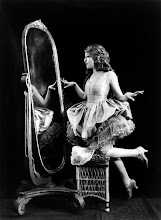 Now, I've never been the biggest romance movie fan, but I do understand the contributions this genre of films has given to the art of filmaking. Don't tune the next month out if you aren't a big romance fan either, because I'm sure there will be at least one film in this bunch you can at least try to appreciate. If not, you really need to get in touch with your sensitive side.
Now, I've never been the biggest romance movie fan, but I do understand the contributions this genre of films has given to the art of filmaking. Don't tune the next month out if you aren't a big romance fan either, because I'm sure there will be at least one film in this bunch you can at least try to appreciate. If not, you really need to get in touch with your sensitive side. 
In fact, romance movies often have the greatest costumes and some of the most memorable lines. Most musicals are some brand of romantic comedy, but don't be fooled by the comedic aspect. The majority of romance movies don't end well or with the characters getting together. I will try to do a good mix of romances that end happily and those that don't, though the one thing I can't promise you is finishing all of this up in the month of February, since it is only 28 days long.
 A few of the movies I will be featuring this month will be on Turner Classic Movie's 31 Days of Oscar, as a testament to how well-made and wonderful they are. Some of these films are public domain or available online to watch as well. I have tried my best to pick some of the very best films of the genre, though the quality of films is always up for debate. If you are considering doing some sort of movie marathon of your own for February, Valentines Day, or if you prefer, Singles Awareness Day this year.
A few of the movies I will be featuring this month will be on Turner Classic Movie's 31 Days of Oscar, as a testament to how well-made and wonderful they are. Some of these films are public domain or available online to watch as well. I have tried my best to pick some of the very best films of the genre, though the quality of films is always up for debate. If you are considering doing some sort of movie marathon of your own for February, Valentines Day, or if you prefer, Singles Awareness Day this year.For a list of great romance movies, there are several places you can access, all of which seem to have a different opinion on the subject. IMDB's list of Top 50 Romances could be helpful and if you're in a bitter spirit, you can take on the Bottom 10 Romances at the bottom of the list. Internetducttape.com provides a list of unordered movies, seventy-six of them to be exact, that will get you in the loving mood. Romancestuck.com has this list of films. And for the big kahuna of lists, you can look to Associated Content, which has a list of over 200 movies, divided up into romance subcategories such as Classic Romance Movies, Guy Gets Girl movies, and Tearjerkers.
Internetducttape.com provides a list of unordered movies, seventy-six of them to be exact, that will get you in the loving mood. Romancestuck.com has this list of films. And for the big kahuna of lists, you can look to Associated Content, which has a list of over 200 movies, divided up into romance subcategories such as Classic Romance Movies, Guy Gets Girl movies, and Tearjerkers.
 Internetducttape.com provides a list of unordered movies, seventy-six of them to be exact, that will get you in the loving mood. Romancestuck.com has this list of films. And for the big kahuna of lists, you can look to Associated Content, which has a list of over 200 movies, divided up into romance subcategories such as Classic Romance Movies, Guy Gets Girl movies, and Tearjerkers.
Internetducttape.com provides a list of unordered movies, seventy-six of them to be exact, that will get you in the loving mood. Romancestuck.com has this list of films. And for the big kahuna of lists, you can look to Associated Content, which has a list of over 200 movies, divided up into romance subcategories such as Classic Romance Movies, Guy Gets Girl movies, and Tearjerkers.So, here's to a month of love and love for great films!







































